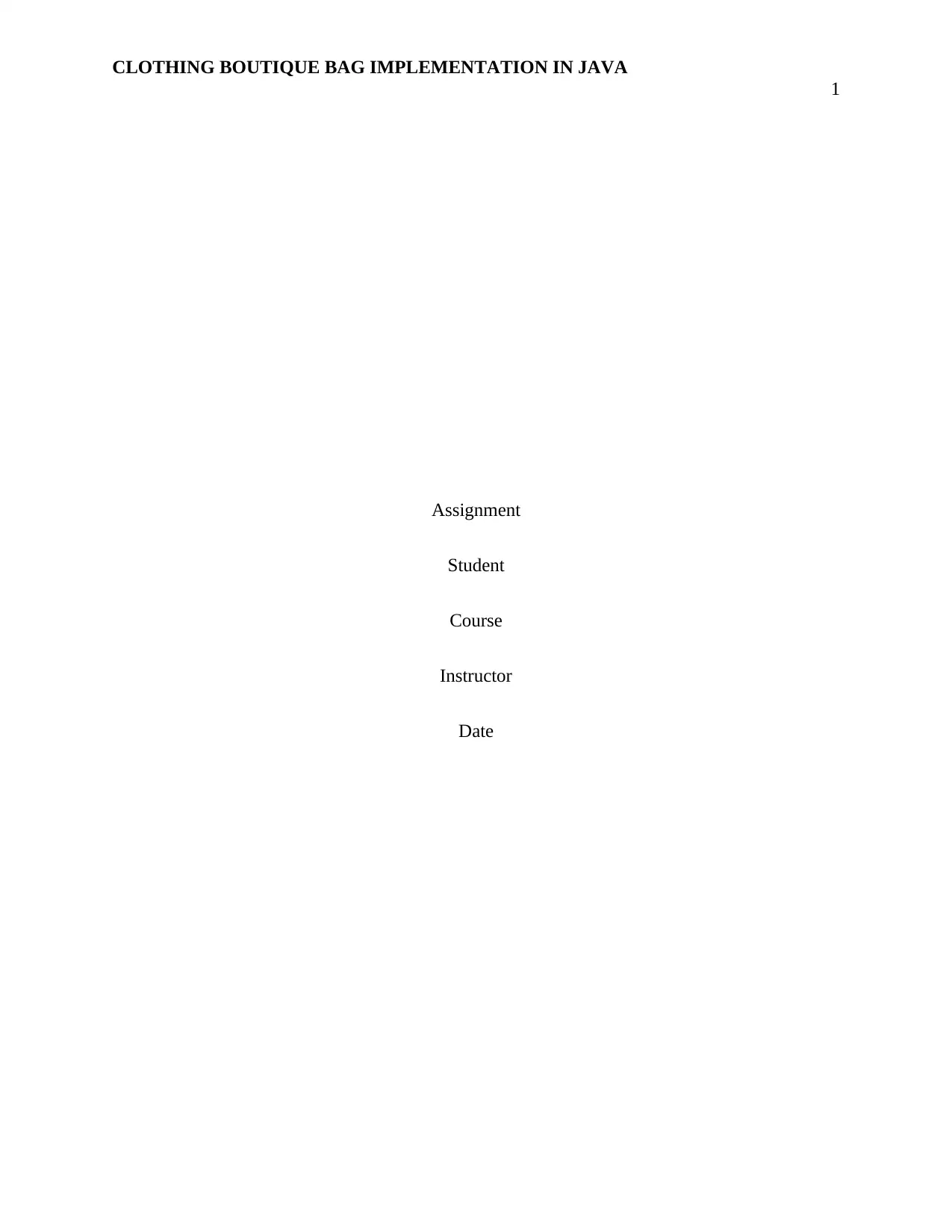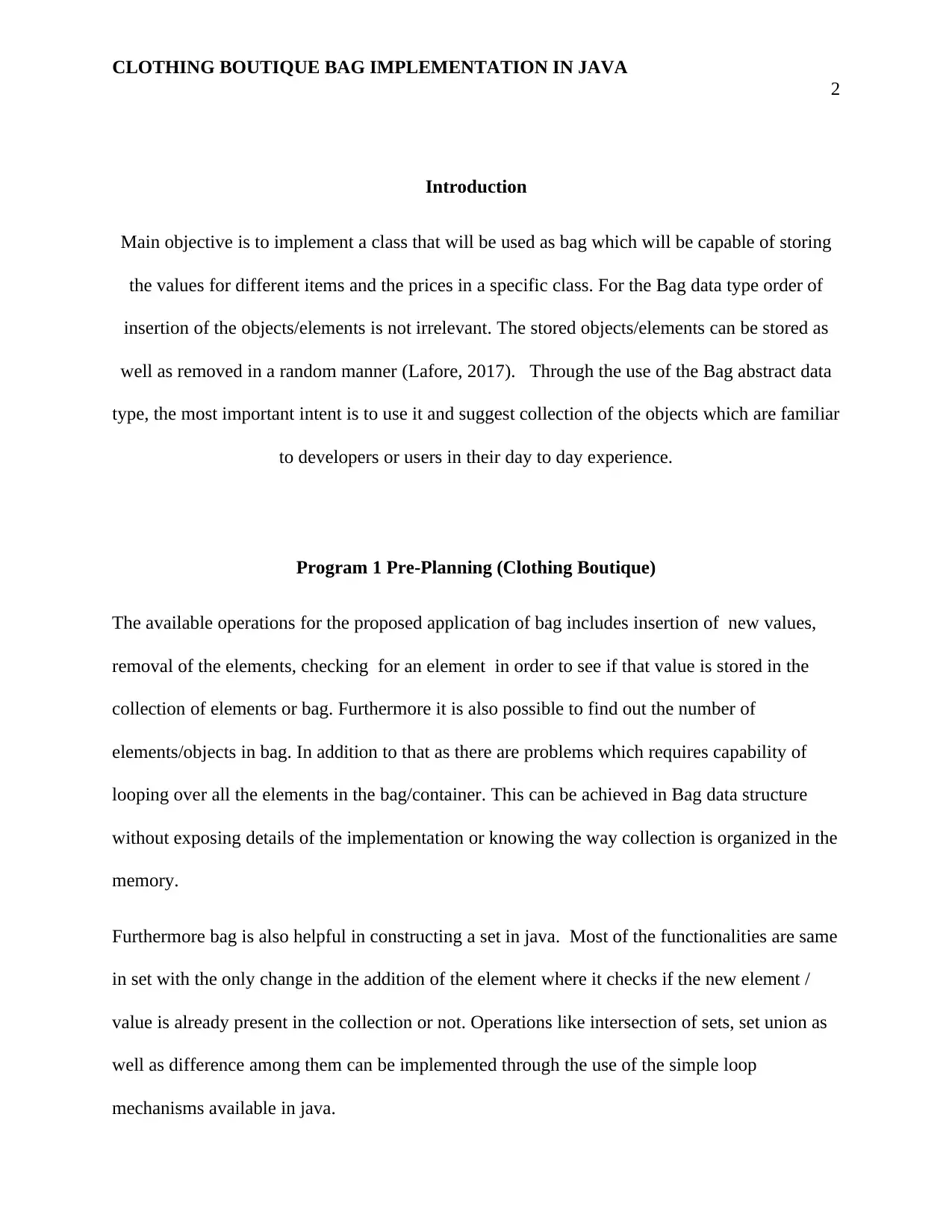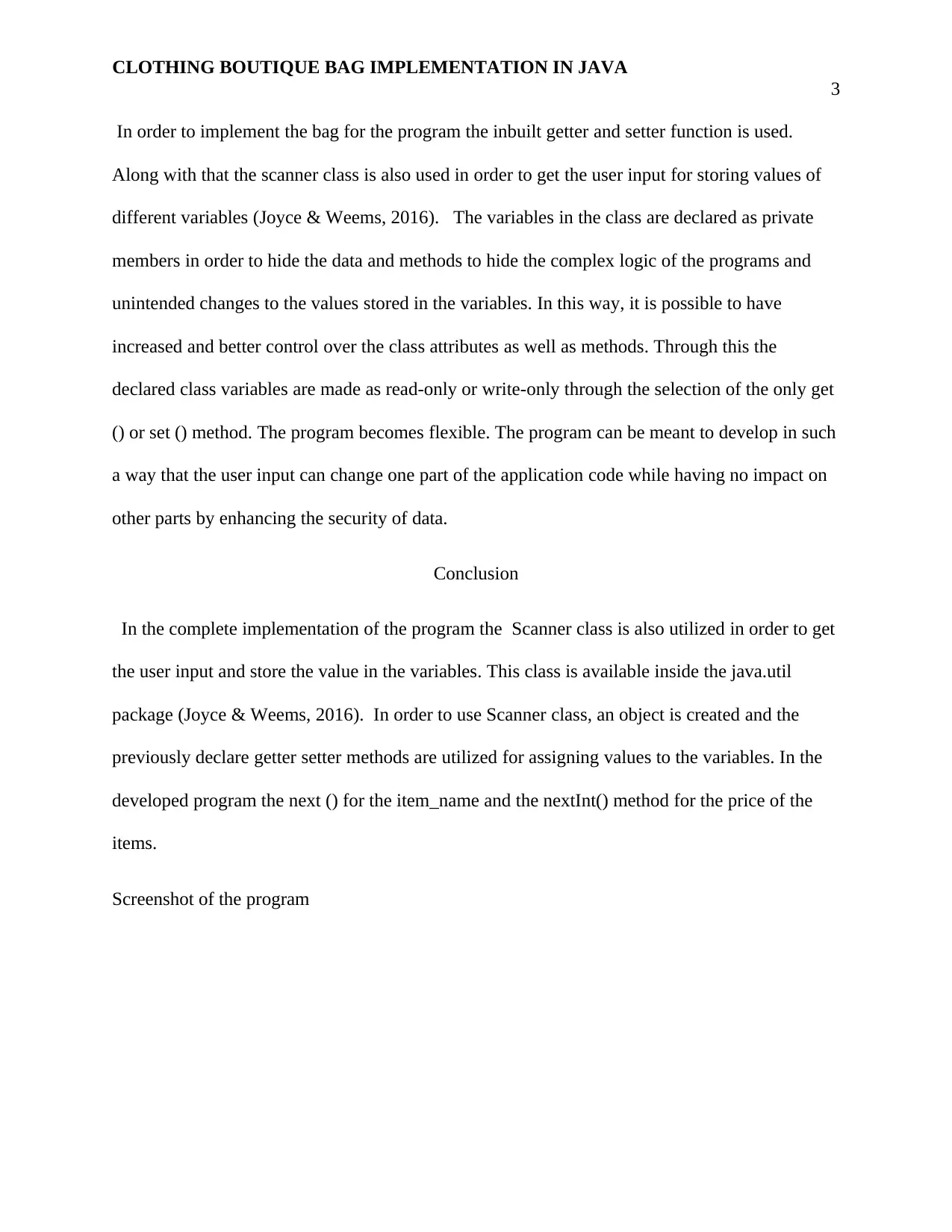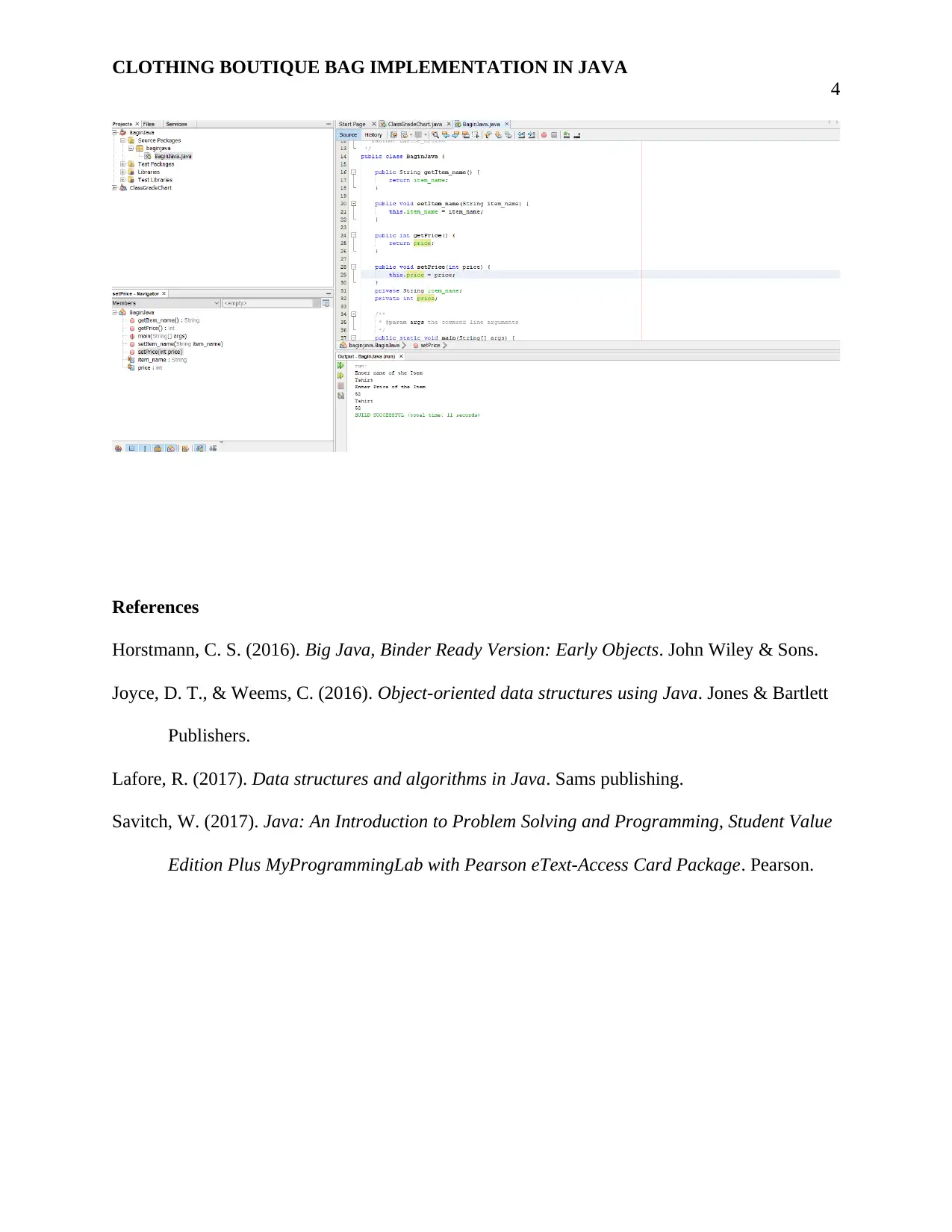Java Assignment: Implementing a Bag for a Clothing Boutique
VerifiedAdded on 2023/04/04
|5
|630
|248
Practical Assignment
AI Summary
This assignment solution focuses on implementing a 'bag' data structure in Java for a clothing boutique application. The core objective is to create a class capable of storing item values and prices, where the order of insertion is irrelevant, and elements can be stored and removed randomly. The solution utilizes the Scanner class for user input and incorporates getter and setter methods to manage data encapsulation. The assignment details the pre-planning phase, outlining operations like insertion, removal, element checking, and counting elements within the bag. The implementation leverages private variables to control access and modify data, enhancing flexibility and data security. The provided code demonstrates how to get user input and store data using the Scanner class, assigning values to variables using getter and setter methods. The document also includes references to relevant literature on data structures and Java programming.
1 out of 5











![[object Object]](/_next/static/media/star-bottom.7253800d.svg)